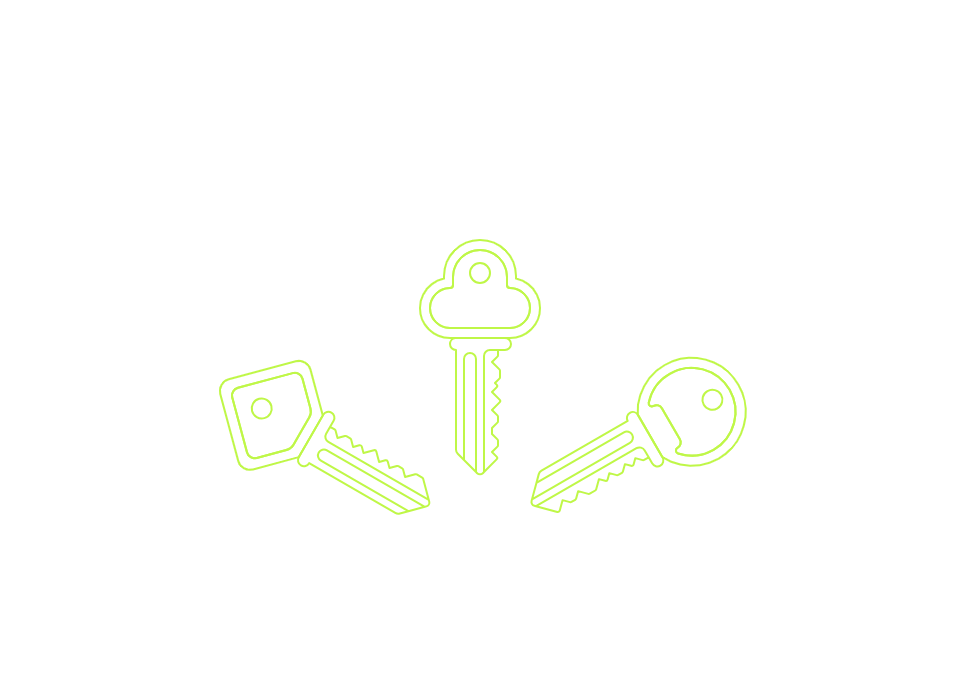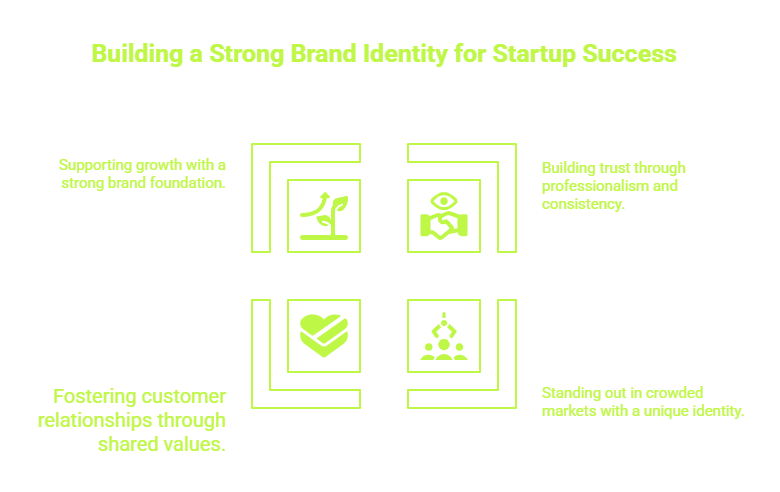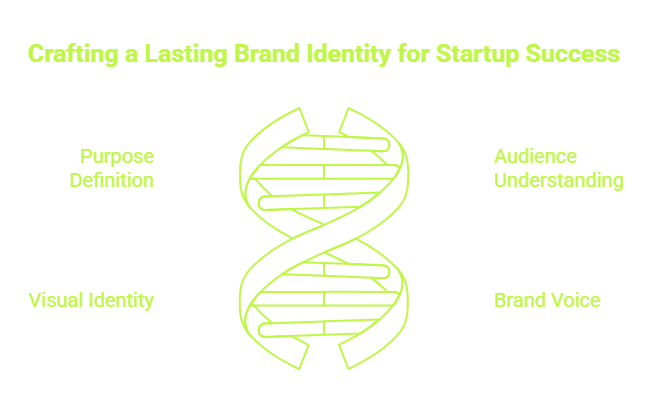How to Build a Memorable Brand Identity for Your Startup

Creating a memorable brand identity is one of the most critical steps for any startup aiming to carve out a niche in today’s competitive market. Your brand identity is more than just a logo or a tagline—it’s the personality, values, and emotional connection that define how your audience perceives you. Whether you’re a tech innovator or a small e-commerce venture, a strong startup branding strategy can set you apart, build trust, and drive long-term success. In this comprehensive guide, we’ll break down the process of building a brand identity into actionable steps, optimized for SEO with keywords like brand development, visual identity, and brand strategy, to help your startup rank on Google’s first page and captivate your audience.
What Is Brand Identity and Why Is It Essential for Startups?

At its core, brand identity encompasses all the elements that shape how your business is perceived. This includes your logo, color scheme, typography, messaging, and even the emotions you evoke in your customers. It’s the DNA of your startup, reflecting who you are and what you stand for. For startups, a well-defined brand identity is non-negotiable because it:
- Establishes credibility: A professional and consistent brand builds trust with customers and investors.
- Differentiates you: In crowded markets, a unique identity helps you stand out from competitors.
- Fosters loyalty: Customers are more likely to stay loyal to brands that resonate with their values.
- Drives scalability: A strong brand foundation supports growth as you expand into new markets or products.
Without a clear brand identity, your startup risks being forgettable or inconsistent, which can erode trust and hinder growth. By investing in brand development early, you create a roadmap for long-term recognition and success.
Step-by-Step Guide to Building a Memorable Brand Identity

Building a brand identity is a strategic process that requires careful planning and execution. Below, we outline eight actionable steps to help your startup create a brand that leaves a lasting impression.
1. Define Your Brand’s Purpose and Core Values
The foundation of any brand strategy is a clear understanding of your startup’s purpose. Your purpose answers the “why” behind your business—why you exist beyond making a profit. To define this:
- Identify your mission: What problem are you solving, and for whom? For example, a sustainable skincare startup might aim to “provide eco-friendly, cruelty-free beauty solutions for conscious consumers.”
- Pinpoint your values: What principles guide your decisions? Examples include transparency, innovation, or community.
- Craft a vision: Where do you see your startup in 5-10 years? A vision statement keeps you focused on long-term goals.
For instance, Patagonia’s brand is rooted in environmental activism, which influences everything from their products to their marketing. Your values will shape your brand identity, ensuring authenticity in every interaction.
Actionable Tip: Write a concise mission statement (1-2 sentences) and list 3-5 core values. Share these with your team to align everyone on your brand’s purpose.
2. Understand Your Target Audience
A successful brand identity speaks directly to the people you want to reach. Knowing your audience inside and out allows you to tailor your branding to their needs and preferences. Conduct thorough market research to uncover:
- Demographics: Age, gender, income, location, and occupation.
- Psychographics: Interests, values, lifestyle, and pain points.
- Behavior: Where do they hang out online? What brands do they trust? What motivates their purchasing decisions?
For example, a fitness app targeting millennials might use vibrant visuals and casual, motivational messaging, while a financial startup for retirees might opt for a calming color palette and authoritative tone.
Actionable Tip: Create 2-3 detailed buyer personas with names, backgrounds, and goals. Use tools like Google Analytics or social media insights to gather data on your audience’s behavior.
3. Develop a Unique Value Proposition (UVP)
Your UVP is the cornerstone of your startup branding. It’s a clear, compelling statement that explains why your startup is the best choice for your audience. A strong UVP answers three questions:
- What product or service do you offer?
- How does it solve your audience’s problem or improve their lives?
- Why should they choose you over competitors?
Example UVP: “Our AI-driven platform streamlines hiring, cutting recruitment time by 50% with smarter candidate matching.” This UVP is specific, benefit-focused, and differentiates the startup from generic hiring tools.
To craft your UVP, analyze competitors to identify gaps in their offerings. Then, highlight what makes your startup unique—whether it’s superior technology, exceptional customer service, or a niche focus.
Actionable Tip= Tip: Test your UVP with a small group of potential customers through surveys or focus groups to ensure it resonates and addresses their pain points.
4. Create a Cohesive Visual Identity
Your visual identity is the face of your brand, making it one of the most recognizable aspects of your brand identity. Key components include:
- Logo: A simple, versatile logo that works across digital and print formats. Ensure it’s scalable and memorable.
- Color Palette: Choose 2-4 colors that evoke the right emotions. For example, blue conveys trust, while orange feels energetic and creative.
- Typography: Select 1-2 fonts that align with your brand’s personality. Modern sans-serif fonts suit tech startups, while elegant serifs work for luxury brands.
- Imagery: Use consistent photos, illustrations, or graphics that reflect your brand’s aesthetic. For instance, a travel startup might use breathtaking landscapes, while a tech company might use sleek, futuristic visuals.
A cohesive visual identity creates instant recognition. Think of Nike’s swoosh or Apple’s minimalist aesthetic—both are instantly identifiable.
Actionable Tip: Work with a professional designer to create a brand style guide that outlines your logo usage, color codes (HEX/RGB), fonts, and imagery guidelines. Tools like Canva or Figma can help if you’re on a budget.
5. Establish a Consistent Brand Voice
Your brand voice is how you communicate with your audience across all channels—website, social media, emails, and customer support. It should reflect your brand’s personality and resonate with your audience. Consider whether your voice is:
- Formal or casual: A legal startup might use professional language, while a pet brand might be fun and conversational.
- Inspirational or practical: A wellness brand might inspire with uplifting messages, while a software company might focus on clarity and efficiency.
- Humorous or serious: A quirky snack brand might use puns, while a healthcare startup might prioritize empathy and professionalism.
For example, Dollar Shave Club’s playful, irreverent voice sets it apart in the grooming industry, while IBM’s authoritative tone reinforces its expertise in tech.
Actionable Tip: Create a brand voice chart with three adjectives (e.g., “friendly, witty, helpful”) and examples of phrases to use or avoid. Share this with your team to ensure consistency.
6. Build a Strong Online Presence
In today’s digital age, your brand identity lives online. A robust online presence amplifies your reach and reinforces your branding. Focus on these key areas:
- Website: Your website is your brand’s digital home. Ensure it’s mobile-friendly, fast-loading, and optimized for SEO with keywords like “brand identity” and “brand strategy.” Include clear calls-to-action (CTAs) and a compelling “About” page that tells your brand’s story.
- Social Media: Choose platforms where your audience is active. For example, Instagram and TikTok are great for visual brands, while LinkedIn suits B2B startups. Post consistently and use your brand’s visual and voice guidelines.
- Content Marketing: Share valuable content like blog posts, videos, or infographics that showcase your expertise and align with your values. For instance, a sustainable fashion brand might publish guides on eco-friendly fabrics.
Actionable Tip: Use tools like Yoast SEO to optimize your website’s meta descriptions, headers, and alt text with LSI keywords like “visual identity” and “startup branding” to improve search rankings.
7. Ensure Consistency Across All Touchpoints
Consistency is the glue that holds your brand identity together. Every customer interaction—whether it’s a social post, product packaging, or customer service call—should feel like it’s coming from the same brand. Inconsistent branding confuses customers and weakens trust.
To maintain consistency:
- Use your style guide for all assets, from business cards to email signatures.
- Train your team on your brand’s mission, values, and voice.
- Regularly audit your channels to ensure alignment.
For example, Starbucks maintains a consistent experience worldwide, from its green logo to its cozy store ambiance.
Actionable Tip: Use a brand management tool like Frontify or Brandfolder to centralize your assets and ensure everyone on your team has access to the latest guidelines.
8. Measure, Refine, and Evolve Your Brand Identity
Building a brand identity is not a one-and-done task—it’s an ongoing process. Regularly evaluate your brand’s performance to ensure it’s resonating with your audience and supporting your goals. Track:
- Customer Feedback: Use surveys, reviews, or social listening tools to gauge how customers perceive your brand.
- Engagement Metrics: Monitor website traffic, social media interactions, and email open rates to measure engagement.
- Brand Awareness: Use tools like Google Trends or Brandwatch to track how often people search for or mention your brand.
Based on your findings, refine your brand strategy. For example, if customers find your messaging too formal, you might adjust your voice to be more approachable.
Actionable Tip: Set SMART goals (Specific, Measurable, Achievable, Relevant, Time-bound) for your brand, such as “Increase Instagram followers by 25% in six months” or “Improve website conversion rate by 10% in Q2.”
Common Mistakes to Avoid in Startup Branding
Even the most well-intentioned startups can stumble when building their brand identity. Avoid these pitfalls:
- Copying competitors: Imitating another brand’s look or voice undermines your uniqueness. Instead, focus on what sets you apart.
- Neglecting consistency: Inconsistent logos, colors, or messaging confuse customers and dilute your brand’s impact.
- Skipping audience research: Building a brand without understanding your audience leads to disconnect and wasted resources.
- Overemphasizing visuals: A logo is important, but it’s only one piece of the puzzle. Your values, voice, and customer experience are equally critical.
- Ignoring scalability: Choose a brand identity that can grow with your startup. Avoid trends that may feel dated in a few years.
Real-World Examples of Successful Startup Branding
To inspire your brand development, here are three startups that nailed their brand identity:
- Warby Parker: This eyewear startup disrupted the industry with a clear UVP: affordable, stylish glasses with a social mission. Their clean, modern visual identity and friendly voice appeal to millennials, while their “Buy a Pair, Give a Pair” program reinforces their values.
- Glossier: This beauty brand built a cult following with a minimalist, millennial-pink aesthetic and a conversational voice that feels like a friend. By prioritizing customer feedback and community engagement, Glossier’s brand identity feels authentic and relatable.
- Slack: Slack’s brand strategy focuses on simplifying workplace communication. Their playful logo, vibrant colors, and witty messaging make work feel less daunting, while their intuitive platform reinforces their UVP.
These startups show that a strong brand identity combines authenticity, consistency, and audience connection to drive growth.
Conclusion: Start Building Your Brand Identity Today

A memorable brand identity is a startup’s secret weapon for standing out, building trust, and fostering loyalty. By defining your purpose, understanding your audience, and creating a cohesive visual identity and voice, you can craft a brand that resonates and endures. While the process takes time and effort, the payoff is worth it—a brand that not only attracts customers but also inspires them to become advocates for your startup.
Ready to get started? Begin by drafting your mission statement and researching your audience. With a clear brand strategy and consistent execution, your startup can create a brand identity that leaves a lasting impression in 2025 and beyond.



